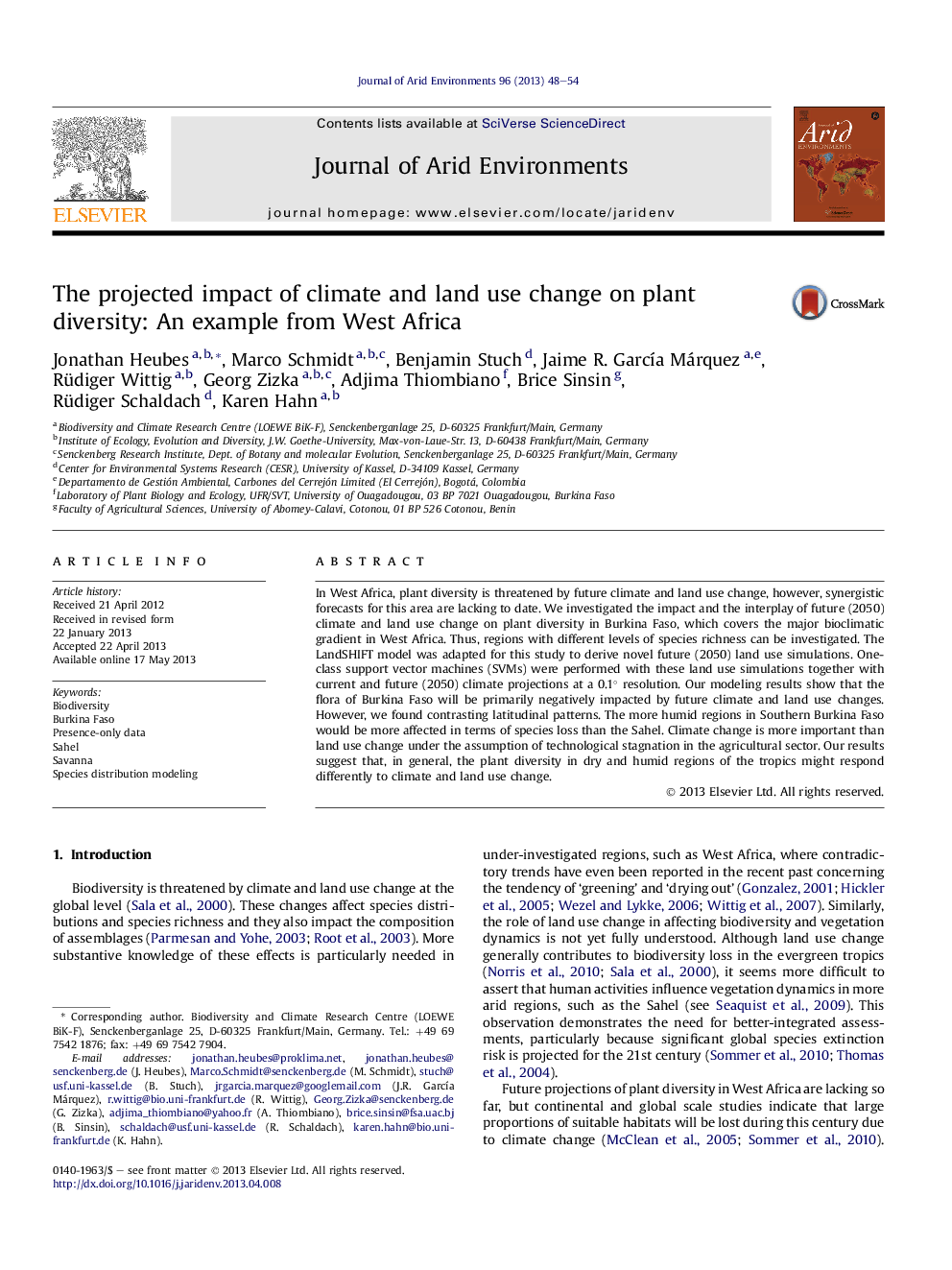| Article ID | Journal | Published Year | Pages | File Type |
|---|---|---|---|---|
| 4393091 | Journal of Arid Environments | 2013 | 7 Pages |
•We modeled future plant diversity considering a broad bioclimatic gradient.•The impacts of both climate and land use change were taken into account.•Novel land use simulations were generated for West African countries.•The flora of Burkina Faso will be primarily negatively impacted.•We found contrasting latitudinal patterns.
In West Africa, plant diversity is threatened by future climate and land use change, however, synergistic forecasts for this area are lacking to date. We investigated the impact and the interplay of future (2050) climate and land use change on plant diversity in Burkina Faso, which covers the major bioclimatic gradient in West Africa. Thus, regions with different levels of species richness can be investigated. The LandSHIFT model was adapted for this study to derive novel future (2050) land use simulations. One-class support vector machines (SVMs) were performed with these land use simulations together with current and future (2050) climate projections at a 0.1° resolution. Our modeling results show that the flora of Burkina Faso will be primarily negatively impacted by future climate and land use changes. However, we found contrasting latitudinal patterns. The more humid regions in Southern Burkina Faso would be more affected in terms of species loss than the Sahel. Climate change is more important than land use change under the assumption of technological stagnation in the agricultural sector. Our results suggest that, in general, the plant diversity in dry and humid regions of the tropics might respond differently to climate and land use change.
